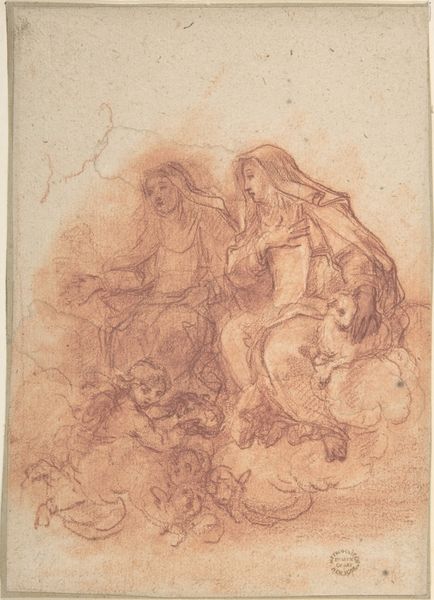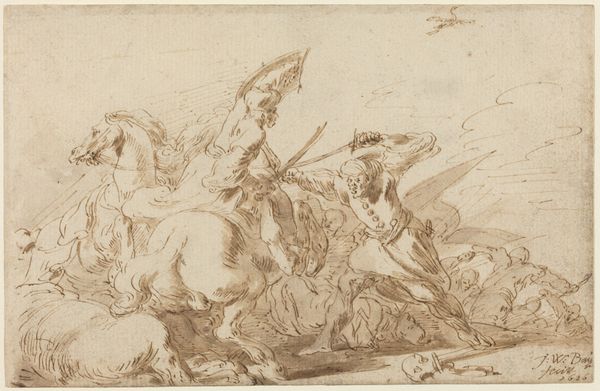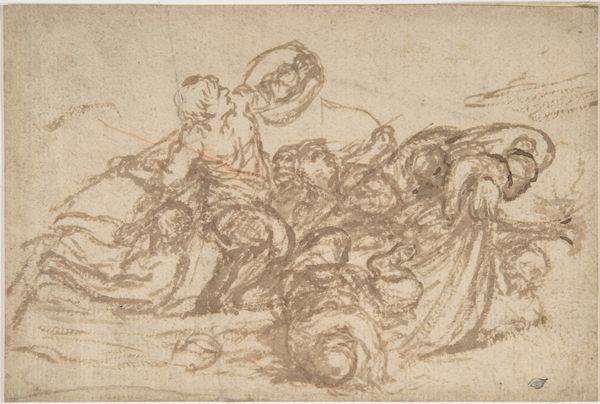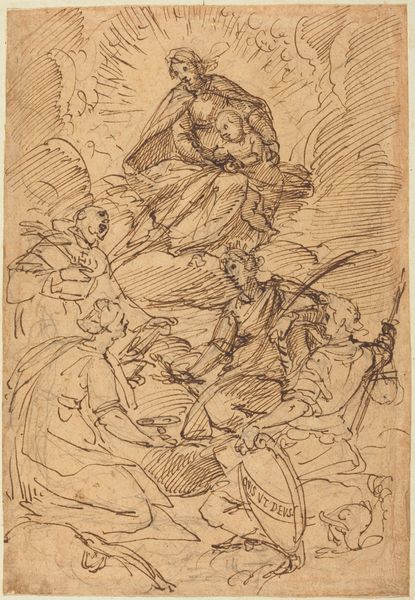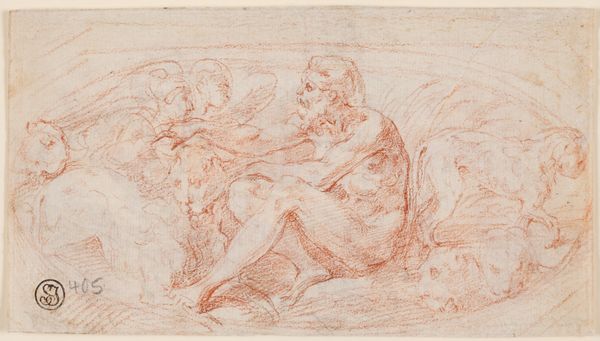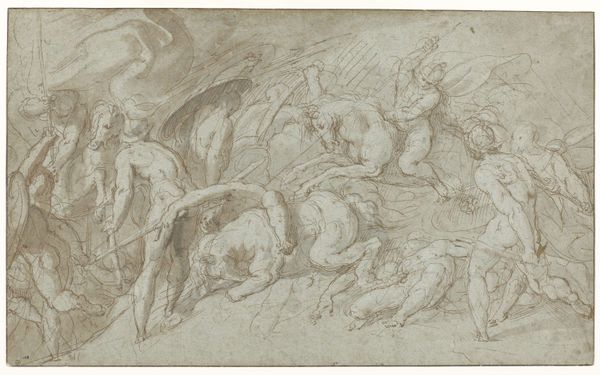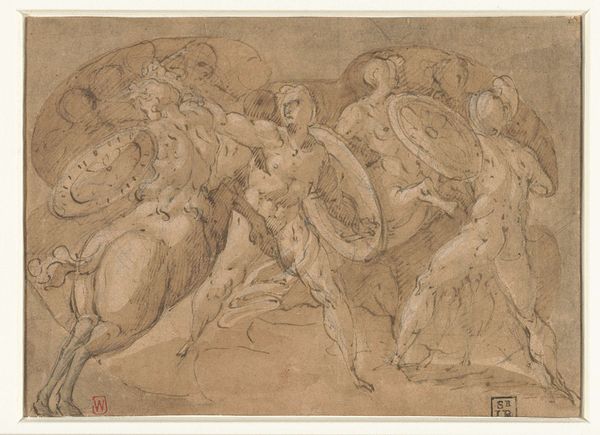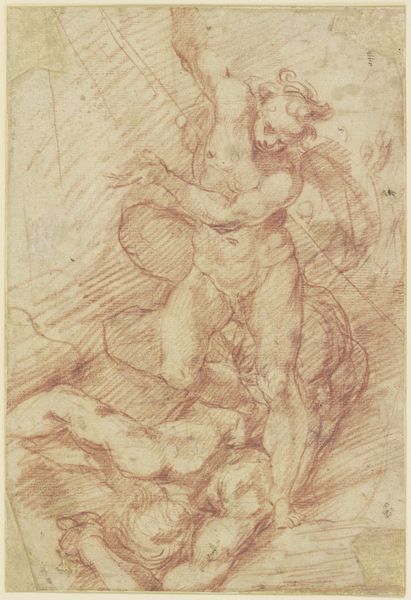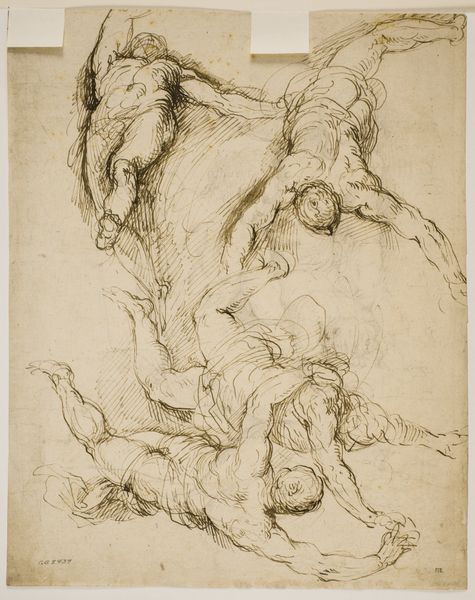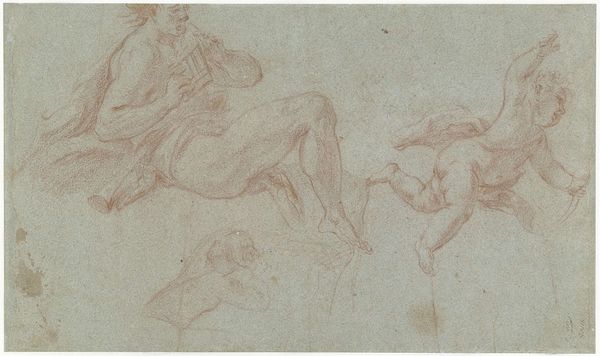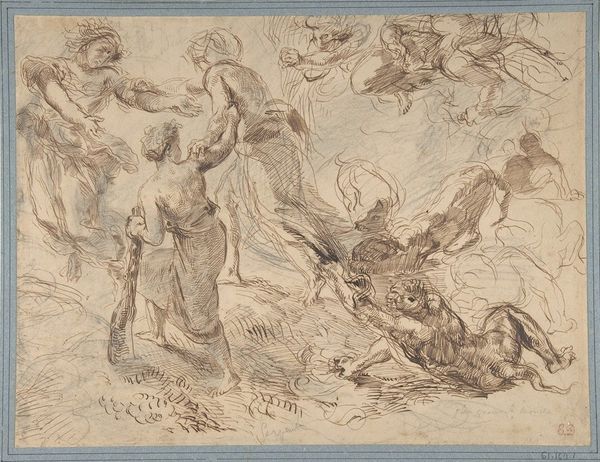
drawing, paper, ink, pencil, pen
#
drawing
#
allegory
#
baroque
#
ink painting
#
pencil sketch
#
figuration
#
paper
#
ink
#
pencil
#
pen
#
history-painting
Dimensions: height 161 mm, width 263 mm
Copyright: Rijks Museum: Open Domain
Curator: This captivating piece is titled "Ten hemelopneming van een heilige," or "Assumption of a Saint" in English, and comes to us from the hand of Pietro Testa, dating back to the 17th century. It's currently held here at the Rijksmuseum. Editor: It’s quite striking! My initial reaction is a sense of upward movement, almost frantic. The composition is so dynamic; the figures seem to be bursting out of the frame. The use of line and shading creates such a whirlwind. Curator: Indeed. Testa's work is firmly rooted in the Baroque period, a time when the Catholic Church used art as a medium to solidify its religious position. I find the depiction of the female saint within this historical moment truly fascinating. Are we witnessing her power, or the male figures orchestrating this supposed moment? Editor: Absolutely, the questions you’re posing around visibility and agency are key. What narratives is Testa upholding or perhaps subverting through this representation? Are there subtle critiques embedded within what appears on the surface as traditional hagiography? Curator: The material here also influences this work. Testa has masterfully rendered the scene using pen, pencil, and ink on paper. The choice of medium lends itself well to the sketch-like quality, capturing movement and a sense of the ethereal. We must consider the institutional impact on his decision making with these media. Editor: Precisely. The seemingly spontaneous marks and corrections – these decisions that were likely influenced by materials readily available to him - give the piece an immediacy, don't they? Perhaps what also matters here is his intersectional status as an Italian man producing work for consumption largely driven by his male peers in a Catholic order. The layers of politics here are fascinating! Curator: Yes, the materiality in conversation with identity provides new insight on what it means to achieve a space or plane higher than what is accessible to us. And the drawing's function? Was it a study for a larger work, or a finished piece in its own right, intended for a collector's cabinet? Editor: Exactly. Considering how it may have circulated and been received, which communities had access, and how their readings may have shaped the understanding of not just this work but representations of saints going forward is essential for our role in shaping modern day approaches to it. It leaves us with many open questions to explore further, I believe. Curator: Absolutely, it enriches my view on the institutional history that led to the themes he represents so skillfully, a confluence we often observe here in the collection at the Rijksmuseum.
Comments
No comments
Be the first to comment and join the conversation on the ultimate creative platform.

